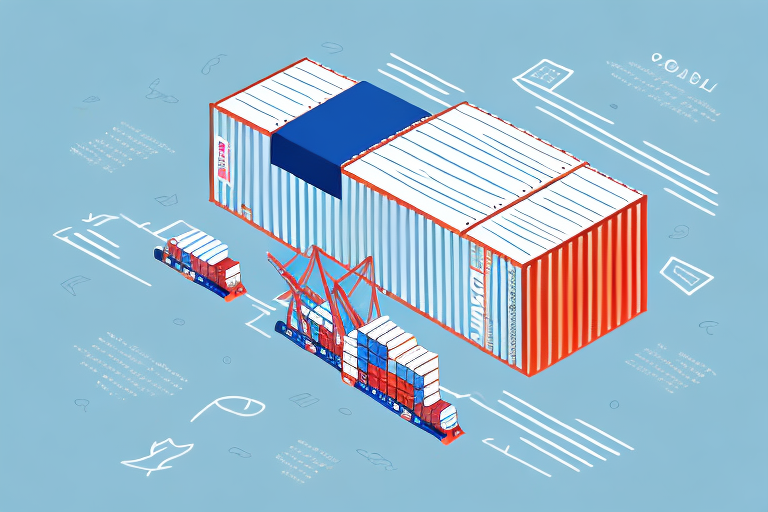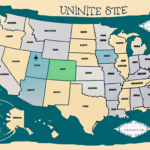Understanding UPS Overseas Shipping Rates
UPS is a globally recognized shipping company that offers services to nearly every corner of the world. Many businesses depend on UPS to transport their products across international borders. However, navigating the complexities of UPS's overseas shipping rates can be challenging. In this article, we provide an in-depth analysis of UPS overseas shipping rates, including the factors influencing them, how to calculate them, cost-reduction strategies, and more.
Factors Affecting UPS Overseas Shipping Rates
UPS considers multiple factors when determining overseas shipping rates. Understanding these factors can help businesses optimize their shipping strategies:
- Destination of the Package: Shipping rates vary based on the country or region, influenced by distance and local regulations.
- Weight and Dimensions: Heavier and larger packages incur higher shipping costs.
- Value of Goods: High-value items may require additional insurance, increasing overall costs.
- Shipping Service Type: Options like air freight are generally more expensive than ground shipping.
- Customs Clearance Requirements: Complex customs procedures can add to shipping costs and time.
- Type of Goods: Certain items, such as electronics or perishables, may require special handling and documentation.
Additionally, seasonal demand fluctuations, such as the holiday season, can lead to increased shipping rates due to higher demand and limited capacity. The distance between origin and destination also plays a crucial role; longer distances typically require more resources and time, thereby increasing costs.
Insurance coverage levels chosen for shipments further impact shipping rates. Opting for higher insurance coverage to protect valuable goods will result in higher shipping costs, reflecting the increased risk and potential liability for UPS.
The Importance of Accurate Shipping Information
Providing precise shipping information is essential when sending packages overseas with UPS. Accurate details about the package's weight, dimensions, destination address, and the value of goods are critical to avoid delays, additional costs, and penalties.
Benefits of Accurate Shipping Information:
- Timely Delivery: Correct destination addresses ensure packages reach their intended recipients without delays.
- Cost Efficiency: Accurate weight and dimension details prevent overpayment or underestimation of shipping costs.
- Compliance: Proper documentation helps in adhering to international shipping regulations, minimizing the risk of penalties.
For instance, shipping time-sensitive items like perishable goods or important documents requires meticulous attention to shipping information to ensure they arrive promptly and intact.
Calculating UPS Overseas Shipping Rates
Calculating UPS overseas shipping rates involves several steps, but understanding the process can help businesses manage their shipping budgets effectively:
- Use the UPS online shipping calculator to estimate costs by entering package details and destination.
- Consider additional fees or surcharges that may not be included in the initial estimate, such as customs fees or fuel surcharges.
- Explore different shipping options, such as express or standard shipping, which can impact both cost and delivery time.
- Check for available discounts or promotions that UPS may offer to eligible businesses.
According to a 2023 UPS report, businesses can reduce shipping costs by optimizing package dimensions and weight, and by selecting the most appropriate shipping method based on their urgency and budget constraints.
Tips for Reducing UPS Overseas Shipping Costs
While UPS overseas shipping rates can be substantial, several strategies can help businesses minimize these expenses:
- Select Slower Shipping Methods: Choosing ground shipping over air freight can lead to significant savings.
- Optimize Package Size and Weight: Reducing the size and weight of packages minimizes shipping costs.
- Consolidate Shipments: Combining multiple packages into a single shipment can reduce overall costs.
- Leverage Alternative Carriers: Comparing rates with other carriers like FedEx, DHL, and USPS can identify more cost-effective options.
Additionally, taking advantage of UPS discounts and promotions can further lower shipping costs. UPS offers various discounts for businesses, non-profit organizations, and frequent shippers. Businesses should regularly consult with their UPS representative to stay informed about available savings opportunities.
Comparing UPS Overseas Shipping Rates to Other Carriers
When evaluating UPS overseas shipping rates, it's crucial to compare them with other major carriers to ensure competitive pricing and service quality. Key carriers to consider include FedEx, DHL, and USPS, each offering unique rates, services, and terms.
Factors to compare include:
- Shipping Rates: Assess the base rates and additional fees for each carrier.
- Delivery Speed: Compare estimated delivery times to meet business needs.
- Service Reliability: Review carrier reliability based on customer feedback and industry reports.
- Coverage Areas: Ensure the carrier provides comprehensive coverage for your target destinations.
For example, DHL is known for its strong presence in Europe and Asia, potentially offering more competitive rates and faster delivery times in these regions compared to UPS. According to the 2023 Global Shipping Industry Report, businesses that regularly compare carriers can reduce their shipping expenses by up to 15% annually.
Understanding the Different UPS Overseas Shipping Services
UPS offers a variety of shipping services tailored to different business needs and budget constraints:
- UPS Worldwide Express: Fast shipping with delivery typically within 1-3 business days.
- UPS Worldwide Saver: Balances speed and cost, usually delivering within 2-5 business days.
- UPS Worldwide Expedited: Cost-effective option with delivery times ranging from 4-7 business days.
- UPS Standard: Ground shipping option offering reliable service within specific regions.
Each service varies in terms of delivery timeframes, cost, and tracking capabilities. Businesses should evaluate their specific needs, such as urgency and budget, to select the most appropriate service. Moreover, understanding the customs regulations of the destination country is crucial for smooth shipping operations. UPS provides customs brokerage services to facilitate compliance with international regulations.
Avoiding Common Mistakes When Estimating UPS Overseas Shipping Rates
Accurate estimation of UPS overseas shipping rates is essential to prevent unexpected costs and delays. Common mistakes to avoid include:
- Incorrect Weight and Dimensions: Ensure precise measurements to avoid overcharges.
- Ignoring Additional Fees: Factor in potential surcharges like fuel fees or customs duties.
- Choosing an Inappropriate Shipping Service: Select a service that aligns with your delivery timeline and budget.
- Misunderstanding Customs Requirements: Research and comply with the destination country's customs regulations to avoid penalties.
By carefully addressing these areas, businesses can achieve more accurate shipping cost estimates and streamline their international shipping processes.
Understanding Additional Fees and Surcharges for UPS Overseas Shipping
Beyond the base shipping rates, UPS applies additional fees and surcharges based on various shipment details. Key additional costs may include:
- Customs Brokerage Fees: Charges for handling the customs clearance process.
- Import and Export Fees: Taxes imposed by governments on imported or exported goods.
- Excise Tax: Taxes on specific goods, such as alcohol or tobacco.
- Remote Area Surcharge: Additional fees for delivering to less accessible locations.
- Fuel Surcharge: Variable fees based on current fuel prices.
Understanding these additional costs is vital for accurate budgeting. Businesses should consult the UPS Fees and Surcharges guide to anticipate and incorporate these expenses into their shipping budgets effectively.
How to Negotiate Better UPS Overseas Shipping Rates for Your Business
Businesses with consistent and high shipping volumes may have the leverage to negotiate more favorable UPS overseas shipping rates. Here are steps to negotiate effectively:
- Demonstrate Shipping Volume: Provide evidence of regular and substantial shipping activity.
- Highlight Loyalty: Emphasize your long-term relationship with UPS and potential for future growth.
- Benchmark Competitors: Present competitive rates from other carriers to strengthen your negotiation position.
- Consult a UPS Sales Representative: Initiate discussions with your UPS account manager to explore available discounts and tailored rate packages.
While not all businesses may qualify for negotiated rates, those that do can realize significant cost savings. According to UPS's business shipping report, companies that successfully negotiate rates can reduce their shipping expenses by up to 20%.
The Impact of Customs and Duties on UPS Overseas Shipping Rates
Customs and duties play a significant role in the overall cost of UPS overseas shipping rates. These taxes and fees are imposed by governments on imported goods and vary based on:
- Destination Country: Each country has its own set of tariffs and taxes.
- Value of Goods: Higher-value items typically incur higher duties.
- Type of Goods: Certain products may be subject to specific taxes or restrictions.
UPS offers customs brokerage services to assist businesses in navigating these regulations, ensuring compliance and facilitating smoother shipments. However, it's essential for businesses to research and understand the customs policies of their target countries to avoid unexpected costs and delays.
For detailed information, refer to the Customs and Duties Guide provided by ShipScience.
How to Track Your UPS Overseas Shipment and Delivery Times
Tracking shipments is crucial for businesses to monitor their packages' progress and ensure timely delivery. UPS provides a unique tracking number for each shipment, offering real-time updates on the package's status from pickup to delivery.
Tracking Features:
- Real-Time Updates: Monitor the exact location and status of your shipment at any time.
- Delivery Time Frame Guarantee: Some UPS services come with guaranteed delivery windows, providing assurance and predictability.
- Notifications: Receive automatic updates via email or SMS regarding your shipment's progress.
Utilizing UPS's tracking tools can enhance supply chain transparency and allow businesses to proactively address any potential delivery issues. For more information, visit the UPS Tracking page.
Understanding Insurance Options for UPS Overseas Shipping
UPS offers insurance options, known as Declared Value, which provide additional protection for overseas shipments. This insurance safeguards against loss or damage, offering peace of mind for businesses shipping valuable goods.
Insurance Features:
- Coverage Amount: Insurance coverage varies based on the declared value of the shipment.
- Cost: Higher coverage amounts incur higher insurance premiums.
- Claim Process: In the event of loss or damage, businesses can file claims to recover the insured value.
When calculating shipping costs, it's essential to factor in the cost of insurance to ensure comprehensive budget planning. For detailed information on insurance options, visit the UPS Insurance Options page.
Choosing the Right Packaging Materials for Safe and Efficient UPS Overseas Shipping
Proper packaging is vital for the safe and efficient shipment of goods overseas. Selecting the right materials ensures that items are protected during transit and comply with international shipping regulations.
Packaging Best Practices:
- Use Sturdy Materials: Opt for robust boxes and padding materials to protect against physical damage.
- Seal Packages Securely: Properly sealing packages prevents exposure to the elements and tampering.
- Label Clearly: Ensure all labels are legible and securely attached to prevent misrouting.
- Comply with Regulations: Research and adhere to packaging requirements of the destination country, such as restrictions on recyclable materials or specific labeling standards.
Investing in quality packaging materials can reduce the risk of damage, decrease the likelihood of shipping delays, and improve overall customer satisfaction.
Best Practices for Preparing Your Shipment for UPS International Shipping
Preparing shipments for international shipping with UPS involves several best practices to ensure efficiency and compliance:
- Accurate Shipping Information: Double-check the destination address, weight, dimensions, and value of goods.
- Select Appropriate Shipping Service: Choose a service that aligns with delivery timelines and budget.
- Secure Packaging: Use durable packaging materials and secure seals to protect contents.
- Understand Customs Regulations: Research and comply with the destination country's import/export requirements.
- Consider Insurance Options: Protect valuable shipments by opting for appropriate insurance coverage.
Adhering to these practices can streamline the shipping process, reduce the risk of delays or additional costs, and enhance the overall reliability of your international shipments.
Conclusion
Understanding UPS overseas shipping rates is a multifaceted process that requires attention to various factors and strategic planning. By comprehensively analyzing the elements that influence shipping costs, accurately calculating rates, and implementing cost-reduction strategies, businesses can navigate the complexities of international shipping with confidence. Additionally, leveraging the right UPS services, ensuring compliance with customs regulations, and maintaining meticulous shipping information are essential for a successful overseas shipping experience. With these insights and best practices, businesses can optimize their international shipping operations, ensuring timely and cost-effective delivery of their products worldwide.






















